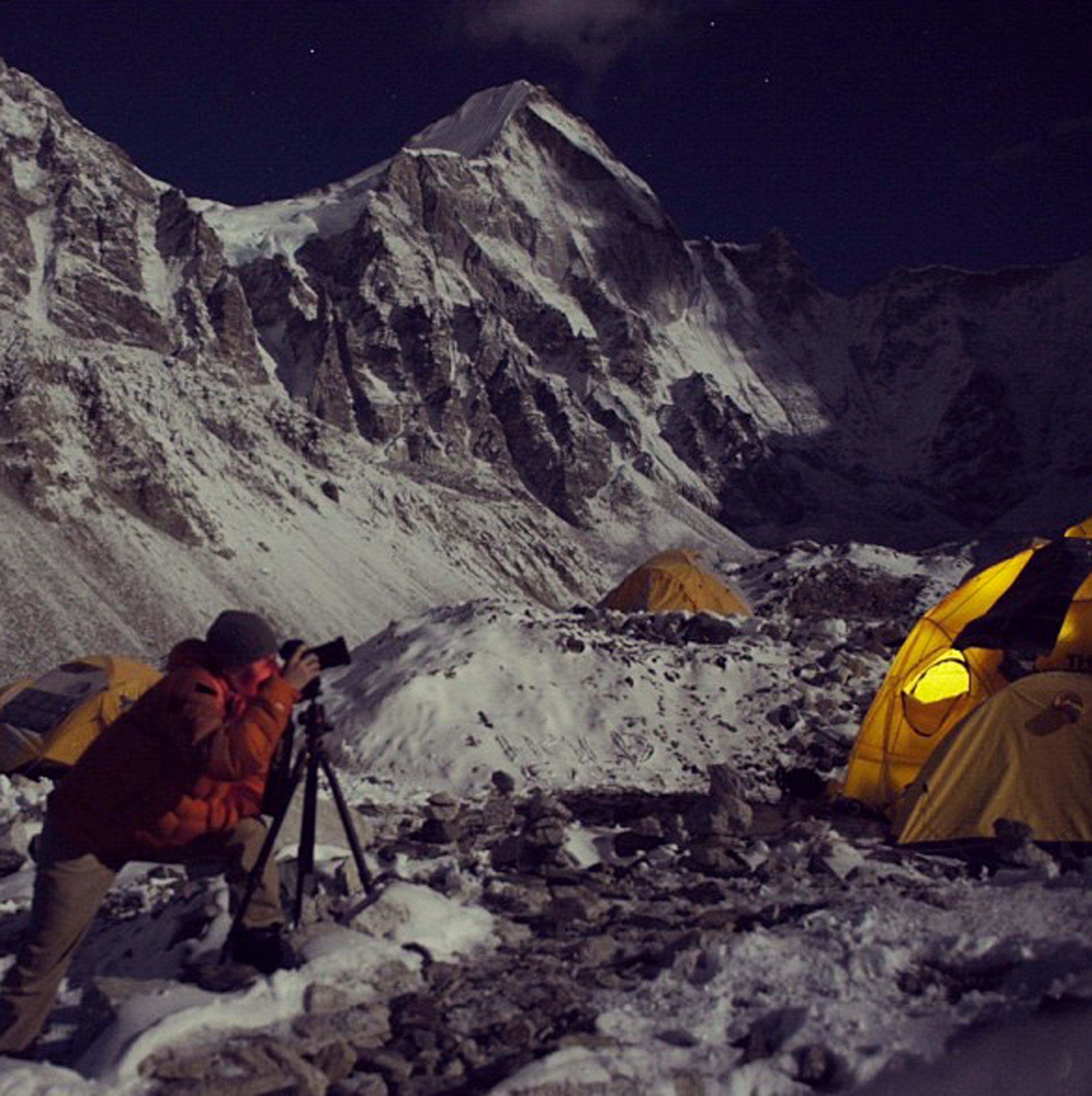
Everest Helicopter Rescue Saves National Geographic Photographer
Despite "not flyable" conditions, an acutely ailing Nat Geo photographer was airlifted to safety Saturday in Nepal.
A National Geographic climber and photographer was airlifted off Mount Everest Saturday after suffering a possible, though as yet undiagnosed, pulmonary embolism—a blockage of an artery in the lungs, often due to a blood clot.
The photographer, Cory Richards, is part of a National Geographic Society and North Face expedition commemorating the 50th anniversary of the first U.S. ascent of Everest. It is not yet clear how his illness might affect the project. (National Geographic News is a division of the Society.)
Saturday afternoon, local time, it became clear that Richards—then at around 23,000 feet (7,000 meters) with expedition leader Conrad Anker—would need to turn back due to shortness of breath and an inability to maintain a normal respiratory rate. Despite initial reports, Richards's ailment "is not an altitude issue," he emphasized via email from Nepal early Sunday, local time.
Later Saturday, down the mountain at Camp 2 (21,200 feet/6,462 meters), doctors, fearing an embolism, gave Richards supplemental oxygen and advised him to continue down Everest, Richards said.
At the time National Geographic magazine picture editor Sadie Quarrier emailed magazine staff from Everest Base Camp (17,600 feet/5,364 meters) that Richards was "in immediate need of helicopter rescue ... "
With "clouds brewing," though, and no helicopter able to reach Camp 2, the Boulder, Colorado-based climber descended to Base Camp largely under his own power, according to Quarrier. There, doctors administered blood thinners—commonly prescribed for pulmonary embolism—and again advised evacuation.
Even at the lower altitude, though, Base Camp was "not flyable" for any rescue helicopters, according to Washington, D.C.-based National Geographic deputy director of photography Ken Geiger.
One pilot, though, wouldn't be grounded. "Cory and I were so happy," Quarrier said, "to see [a helicopter arranged in part by Richards's friend and climbing partner] Simone Moro fly in and save the day." (Related interview: "Simone Moro on Traversing Everest, Winter Ascents, and Women’s Education in Pakistan.")
At a medical facility in nearby Lukla, Nepal, Quarrier wrote Saturday night that she and a doctor would "watch over Cory tonight in shifts (staff is too tight here) ... He's been given blood thinners and tomorrow they'll check on lungs," she added. "He's had soup and doing well."

On Sunday morning Richards was admitted to a hospital in the Nepali capital of Kathmandu, where he remained Monday. The climber is in good spirits and awaiting a final diagnosis, according to magazine staff.
As part of the anniversary expedition, Richards, a North Face team athlete, is planning to ascend Everest's risky, little-traveled West Ridge route with fellow North Face climber Anker. Another team is to follow the more commonly climbed Southeast Ridge.
"This expedition is a culmination of my career as a photographer and climber," Richards said on National Geographic magazine's Field Test blog. "It is the realization of a partnership, friendship, and mentorship that reaches beyond words."
Though the expedition is Richards's first attempt at the world's tallest mountain, he's no stranger to the roof of the world, having become the first American to summit a mountain taller than 8,000 meters (26,250 feet)—Pakistan's Gasherbrum II—in winter.
(Also see: Everest 2012 on the National Geographic adventure blog.)
"One Hour at a Time"
Richards's experience underscores the vulnerability of even the strongest climbers high on Everest, so far from the nearest hospital and, with its thin air, so difficult for helicopters to reach. Just this month a Sherpa guide who had summited the mountain several times succumbed to apparent altitude sickness, becoming the first fatality of the current Everest climbing season.
If all goes well, Richards intends to head back to the mountain, though friends and doctors were advising him Saturday to take it "one hour at a time," according to Quarrier.
In the end, it may be Richards's climbing partner who makes the call, National Geographic magazine editor Peter Miller told National Geographic News via email.
Anker won't make the climb alone, and won't ascend with just anyone. "Conrad feels it's very important to climb with someone you know well and trust," Miller said.
"In short, we won't know how this affects the climb until Conrad tells us."
For the latest National Geographic Everest-expedition updates, see Field Test >>
Corrections: Simone Moro was initially reported to have been the helicopter pilot who retrieved Cory Richards. Richards's illness was originally said to have been an apparent case of altitude sickness.




